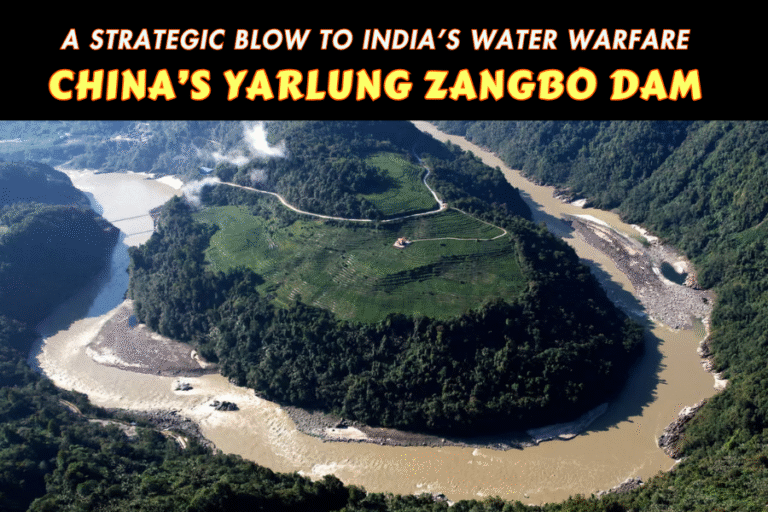(By Khalid Masood)
In a transformative bid to reposition itself as a global hub for digital innovation, Pakistan’s government has allocated 2,000 megawatts (MW) of surplus electricity to fuel Bitcoin mining and artificial intelligence (AI) data centers, announced on May 25, 2025. This ambitious initiative, spearheaded by the newly formed Pakistan Crypto Council (PCC) under Finance Minister Muhammad Aurangzeb, aims to monetize underutilized energy, attract billions in foreign investment, and generate high-tech jobs. With an estimated 40 million cryptocurrency users and a $250 billion crypto trading volume, Pakistan ranks ninth in the 2024 Chainalysis Global Crypto Adoption Index, signaling a vibrant digital economy. However, the absence of a clear legal framework for cryptocurrencies, coupled with limited public awareness, casts a shadow over this bold strategy. This article explores the opportunities, challenges, and geopolitical implications of Pakistan’s crypto pivot, emphasizing the critical need for robust regulation to ensure sustainable success.
1. The Energy Opportunity: Monetizing Surplus Power
Pakistan’s energy sector has long faced a paradox: despite a generation capacity of 26,000 MW, surplus electricity—often from underutilized coal plants operating at 15% capacity—goes unused due to high tariffs and seasonal demand fluctuations. The government’s decision to allocate 2,000 MW to Bitcoin mining and AI data centers seeks to transform this liability into an economic asset. Bitcoin mining, which globally consumes 160 TWh annually, and AI data centers, with their consistent energy demands, are ideal for absorbing excess power. Finance Minister Aurangzeb described this as “a pivotal moment in Pakistan’s digital transformation,” projecting billions in foreign exchange and thousands of jobs.
The initiative’s first phase repurposes idle coal plants, with plans for a second phase integrating renewable energy from Pakistan’s 50 GW wind potential in the Gharo-Keti Bandar corridor, solar, and hydropower. This aligns with global trends: El Salvador’s geothermal Bitcoin mining has yielded 3,200 BTC since 2021, and Bhutan’s renewable-powered mining supports its GDP. Pakistan’s strategic location, bolstered by the 45,000-km Africa-2 submarine cable enhancing internet connectivity, positions it as a digital bridge between Asia, Europe, and the Middle East, attracting interest from global miners and firms.
2. The Pakistan Crypto Council: A New Era of Blockchain Governance
Established on March 14, 2025, the PCC, led by Finance Minister Aurangzeb and CEO Bilal Bin Saqib, marks Pakistan’s shift from crypto skepticism to strategic embrace. Saqib, appointed Special Assistant to the Prime Minister on Blockchain and Cryptocurrency on May 26, 2025, unveiled Pakistan’s Strategic Bitcoin Reserve at Bitcoin Vegas 2025, signaling global ambitions. The PCC’s mandate includes regulating blockchain technologies, fostering digital asset adoption, and aligning with Financial Action Task Force (FATF) and International Monetary Fund (IMF) standards.
On May 21, 2025, the Ministry of Finance approved the Pakistan Digital Assets Authority (PDAA), tasked with licensing exchanges, wallets, stablecoins, and DeFi platforms, as well as tokenizing national assets and government debt. The PDAA aims to formalize Pakistan’s $250 billion informal crypto market, with Saqib estimating that regulated mining could generate 17,000 BTC annually under optimal conditions. High-profile appointments, including Binance co-founder Changpeng Zhao as strategic advisor on April 7, 2025, and partnerships with Trump-backed World Liberty Financial, enhance credibility.
3. Regulatory Limbo: The State Bank’s Caution
Despite these strides, cryptocurrencies remain unregulated and are not legal tender in Pakistan. In April 2018, the State Bank of Pakistan (SBP) issued a circular prohibiting financial institutions from supporting crypto transactions, citing risks of money laundering and terrorist financing. While not an outright ban, this stance stifled formal trading. In April 2024, the SBP reiterated its caution, urging banks to avoid crypto-related payments, though it began exploring a central bank digital currency (CBDC).
The formation of the PCC and PDAA signals a policy shift, but the lack of a comprehensive legal framework remains a hurdle. In 2023, then-Finance Minister Ishaq Dar noted FATF’s stipulation that legalizing crypto could jeopardize Pakistan’s exit from the FATF grey list, achieved in October 2022 after years of scrutiny for terrorism financing. The IMF, which approved a $2.1 billion package for Pakistan in 2025, demands oversight of crypto assets to prevent illicit flows, adding pressure for FATF-compliant regulations.
4. Global Context: Learning from Regulated Markets
Sixty-two countries, including the US, EU, Japan, and Singapore, have established crypto regulations covering licensing, taxation, and anti-money laundering (AML) measures. The EU’s Markets in Crypto-Assets (MiCA) framework, effective 2024, standardizes licensing and investor protections, while the US requires exchanges to register with the SEC and comply with AML laws. Singapore’s Payment Services Act mandates robust KYC and transaction monitoring, fostering a secure crypto hub. These models balance innovation with stability, attracting investment while mitigating risks.
Pakistan’s crypto market, with 40 million users and $250 billion in trading volume, rivals India’s but lacks similar oversight. India’s 2022 crypto tax regime and AML requirements have stabilized its market, while Pakistan’s unregulated exchanges face scam risks. Posts on X highlight public enthusiasm for Pakistan’s crypto push (@Cointelegraph, May 21, 2025), but experts warn of fraud without regulation, citing global cases like Hamas’s use of crypto for illicit funding.
5. Opportunities: Economic and Geopolitical Gains
Pakistan’s initiative offers significant benefits:
- Economic Boost: Redirecting surplus power to mining and AI could generate $1–2 billion annually in foreign exchange, per Saqib, with tax incentives like duty exemptions attracting firms. Job creation in IT, engineering, and data sciences could address youth unemployment (15% in 2024).
- Bitcoin Reserves: A national Bitcoin wallet, inspired by the US’s strategic reserve under President Trump, could hedge against inflation (12% in 2025) and currency devaluation.
- Global Positioning: Pakistan’s low energy costs (8–10 cents/kWh vs. India’s 12–15 cents) and digital connectivity via Africa-2 give it an edge over regional rivals. Interest from Chinese, Malaysian, and US firms underscores its appeal.
- Data Sovereignty: Local AI data centers enhance cybersecurity and reduce reliance on foreign cloud services, critical amid Indo-Pak tensions post-Operation Sindoor (May 2025).
6. Challenges: Risks of Premature Implementation
Without regulation, Pakistan’s crypto ambitions face serious risks:
- Scams and Fraud: With low public awareness—only 30% of Pakistanis understand blockchain, per a 2024 Statista survey—unregulated exchanges and Ponzi schemes could exploit users, as seen in 2023’s $100 million crypto scam in Karachi.
- Illicit Activities: Unmonitored crypto flows risk FATF sanctions, especially given Pakistan’s history of hawala networks. The “Bitcoin shakers” model, used by groups like Hamas, highlights vulnerabilities.
- Economic Instability: Premature mining could strain the grid if demand spikes, exacerbating outages (4–6 hours daily in rural areas). Unregulated capital flight via crypto could destabilize the rupee (PKR 280/USD in May 2025).
- Geopolitical Tensions: China, a key lender via CPEC, bans crypto, creating friction. India’s scrutiny of Pakistan’s crypto push, citing terror funding risks, could escalate diplomatic strains.
7. The Path Forward: Regulation and Education First
To succeed, Pakistan must prioritize:
- Comprehensive Regulation: The PDAA should expedite FATF-compliant laws, mandating KYC, AML, and licensing for exchanges. Singapore’s model—clear rules with innovation sandboxes—could guide Pakistan.
- Public Education: Nationwide campaigns, leveraging Pakistan’s 70% mobile penetration, should demystify crypto, warn against scams, and promote safe investing. The PCC’s youth-focused initiatives, backed by Chief of Army Staff Syed Asim Munir, are a start.
- Transparent Implementation: The government must clarify mining site locations, energy tariffs (targeting 5–6 cents/kWh), and revenue allocation to build trust. Regular updates via the PCC’s website and X (@PakistanCryptoCouncil) can counter misinformation.
- International Collaboration: Engaging IMF and FATF representatives in PDAA’s framework development, as done in 2021, ensures global alignment. Partnerships with Malaysia for Shariah-compliant finance could enhance credibility.
8. Geopolitical Implications: A New Digital Frontier
Pakistan’s crypto strategy, inspired by the US’s Bitcoin reserve and El Salvador’s adoption, positions it as a case study for emerging economies. Success could inspire Bangladesh or Nigeria, with similar energy surpluses, to follow suit, reshaping global mining dynamics. However, failure risks reinforcing IMF and FATF skepticism, isolating Pakistan amid its $2.1 billion IMF lifeline. Regionally, India’s cautious crypto stance and China’s ban create a window for Pakistan to lead South Asia’s digital economy, but only if it navigates FATF and IMF scrutiny.
9. Conclusion: A Golden Opportunity with Guardrails
Pakistan’s allocation of 2,000 MW for Bitcoin mining and AI data centers is a visionary step to harness surplus energy, attract investment, and build a digital economy. With 40 million crypto users and a strategic location, Pakistan could rival Dubai or Singapore as a Web3 hub. Yet, the absence of regulation, low public awareness, and geopolitical risks threaten to derail this ambition. By prioritizing FATF-compliant laws, public education, and transparent governance, Pakistan can seize this golden opportunity, ensuring economic stability and global leadership in the crypto era.







